First day in Old Town Lijiang, going to see the Impression of Lijiang and went to Baisha village. Today, waking up on the third day in Old Town Lijiang (丽江古城) or Dayan Guchen (Dàyán Gǔchéng), we decide to walk around.
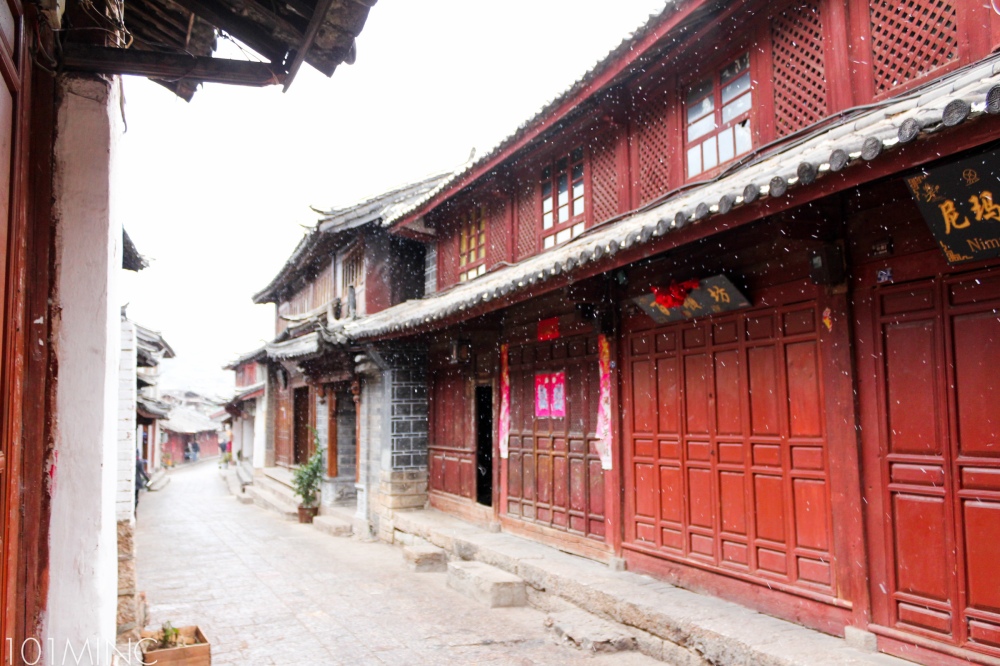

Old Town Lijiang (丽江古城) or Dayan Guchen (Dàyán Gǔchéng)
Lijiang is home for the Naxi (纳西族) minority ethnic group. Other ethnic groups/minorities also live here are Tibetan (བོད་པ,藏族), Musuo (摩梭), Yi (彝族) and Bai (白族). It is said that the merchants and caravan traded on the Silk Road and Ancient Chamada (茶马道, Tea and Horse) roads, ride the horses on the clobbers stones street.
Old Town Lijiang (丽江古城) was previously called Gongbenzhi by the native Naxi (纳西族) language. It means a “market town for carrying goods to trade” with Sifang Street (四方街) market square as its center.


Sifang Street (四方街) market square

The best feature of this old town is the cleaning system using the river. If it’s close, the water will overflow the market square and cleanse it.



Hot pot restaurant, unfortunately it’s close.
We’re going up to the Lion Hill (狮子山, Shīzi shān). It is named such because it’s resemble a crouching lion (not tiger, and no dragon), covering 0.18 square kilometers with lovely cypress trees.


Wonderful view

The Mu’s Mansion
Cypress forest


Entrance to Wangu Pavillion (万古楼)
Wangu Pavillion (万古楼) is built in 1997 to commemorate Lijiang as UNESCO World Heritage. It’s a five stories building with a height of 33 meters, support by 16 columns. The pavillion is in Naxi architecture and decorated in Naxi fresco paintings inside out with the influence of Han to Qing dynasties.



The inside of the pavillion is decorated with 2.300 patterns for 23 ethnic groups living in Lijiang. There’s also 9.999 dragon patterns on the structures with the last dragon to make 10.000 on the fifth floor ceiling. 10.000 in Chinese is “wan” or ever lasting/eternal prosperity.


Lijiang from the fifth floor
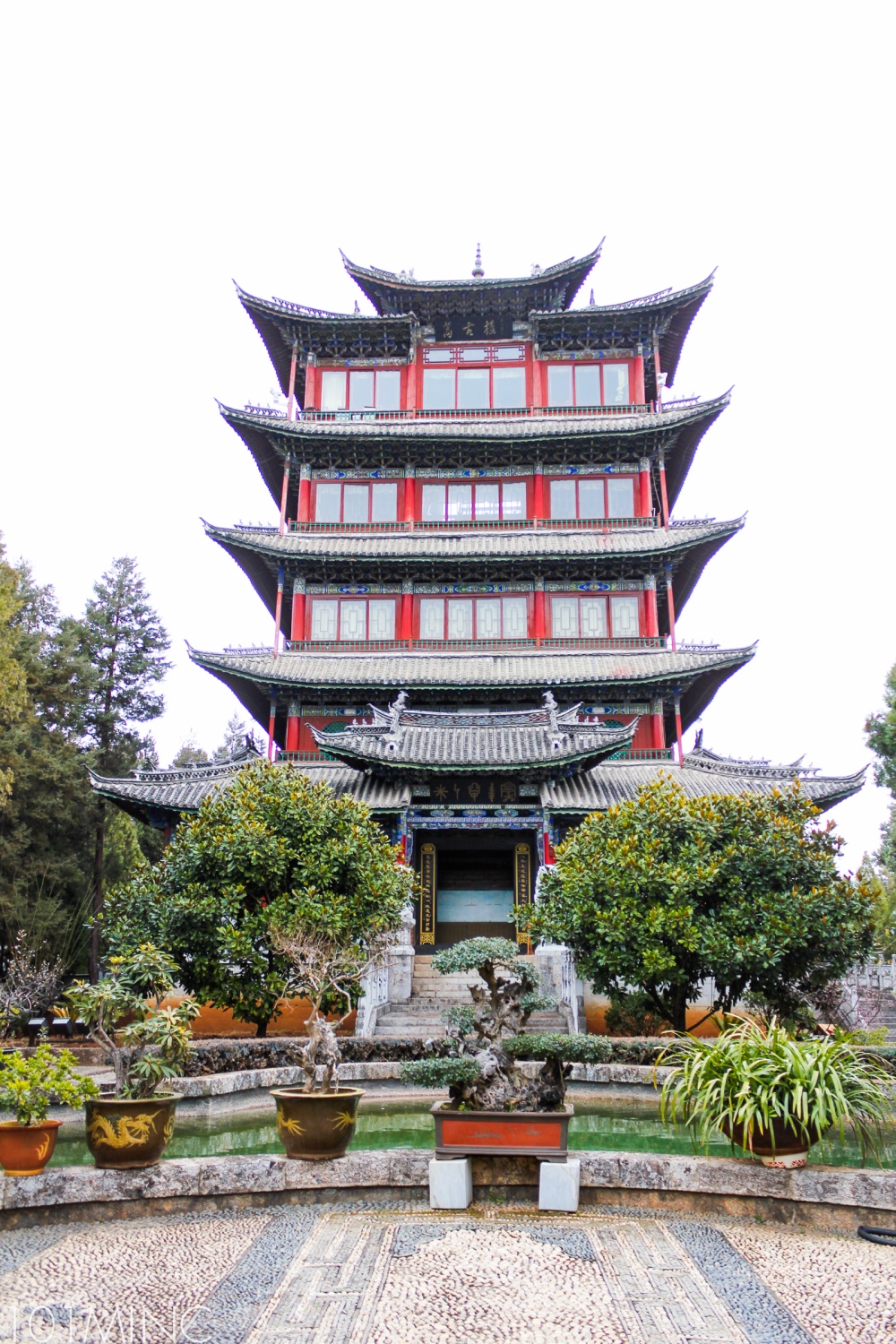
The back of Wangu Pavillion (万古楼)
Drum Tower (right) and Bell Tower (left)
Going down the hill we sort of ‘get lost’ between the alley ways. Hmm found some snacks along the way. I just like the peppery Sichuan chili in everything they deep fried.

The Great Gate

Meet this old man with an eagle. I think he wants money for photo, but we move along (after I get a quick shot of course).

Old women selling snacks and guide brochure/books

Another paifang (牌坊) or Chinese gate made of wood with Naxi decorative aesthetic

The Entrance of the Mu Residence/Mansion (府木, Mù Fǔ)
Mu Residence (府木) is the mansion of the Mu Family (木氏家族, Mù) as the magistrate of Lijiang and the Naxi (纳西族) people. The government official appointed by the Emperor of the Ming Dynasty then move to Lijiang from Baisha (白沙) village and built their large complex. Their open policy to outsiders since the village has no wall, gather other ethnic groups, Taoism, Buddhism, Lamaism and Tibetan Buddhism in trade and friendship. In return, the other ethnic groups especially the Han (漢族) and Bai (白族) cultures influence the architecture and craftsmanship. The Mansion was built in 1382 (Ming Dynasty), with its buildings and courtyards in a straight line from east to west.
The residence has no walls since the family prefer not to have the Chinese character 口, and applies to their home. Because 木 with 口 is 困, means surrounded or walled inside, therefore the complex has no walls like their name.
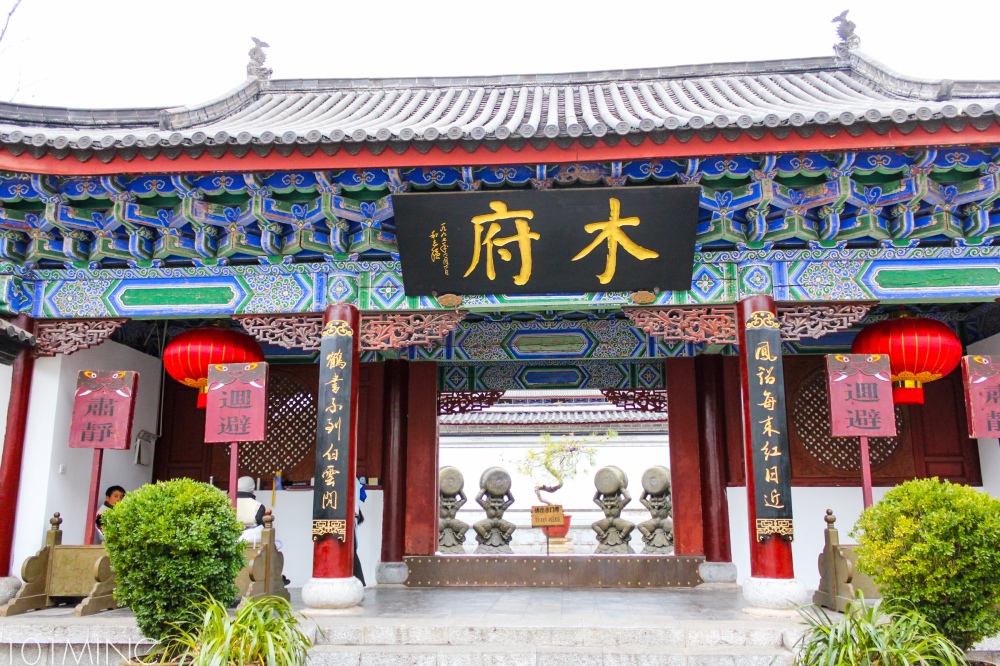
Stone Memorial Arch of Loyalty (忠义石牌坊). Entrance fee 60 CYN (30 CYN with student discount)


Drum Tower

Yimen Meeting Hall (仪门议事厅)


Gorgeous corridor to another side

The library, Wanjuan Tower (万卷楼)

Blossoming plum
Books, scriptures etc.


Hufa Hall (护法殿, Hind Meeting Hall)


Guangbi Tower (光碧楼)




Yuyin Building (玉音楼) for holding banquet and receiving Imperial diplomat

Stage for Naxi performance



Sanqing Hall (三清殿) a Taoist temple for worship and visitors can as the monks to pray for health, fortune and good luck with a suitable donation


Mu Residence (府木)
Several photos later we go down and head for the market place where the local people sells fresh produce and food.



This friend potato with Sichuan chili is so, so, so good! (3 CYN)

Bai (白族) murals


Sanyan Well (三眼井戸) is a spring with 3 pool sections. The pools each have different level from the high water flow to the lower pool to efficiently use the water. The upper pool is use for drinking, the middle for cleaning vegetables and the last one to wash the clothes.

Yogurt made from Yak milk. Taste good. It reminds me of India’s Lassi.

A modern bakery

A beautiful wooden structure
Architecture, alley ways and water system around the town

Local Naxi people around the square



License to sell

Tea parlor. There are many Chinese tea from Yunnan, Pu’er, black tea, etc.
Fancy stores and local craft




We’re planning to see the Dongba (东巴) culture museum, but it’s close at the time. Sad.
The Naxi (纳西族) practice the Dongba (东巴) culture. It’s influence from the Bön (བོན) or Tibetan teaching. It harmonizes between nature and the people. The rituals are influence from Bön and Taoist. Dongba (东巴) believe that every creatures have spirit and worship of nature.
Dongba (东巴) also has its own pictographic glyph use by the Naxi (纳西族) people. The pictograph is called Sijiulujiu, and developed between the 7th — 11th century, carved on wood and stone. While it was abolish during the cultural revolution, present day government try to revive it to preserve the culture and for the tourism industry. A lot of business and tourists name even village places have three language: Chinese, English and Dongba (东巴) pictograph. The pictograph is the only surviving hieroglyph still used until today.
The Naxi (纳西族) also practive wood block painting. These are use to ward evil spirits and rituals. The entrance wood from the museum is shaped like the Five-Buddha crown.


There’s a pizza hut and KFC. hmm. I don’t know what to think. But it shows the three languages nicely.



Weaving scarf and warm blanket made with wool. I think I bought like six pieces because they are so colorful and warm.
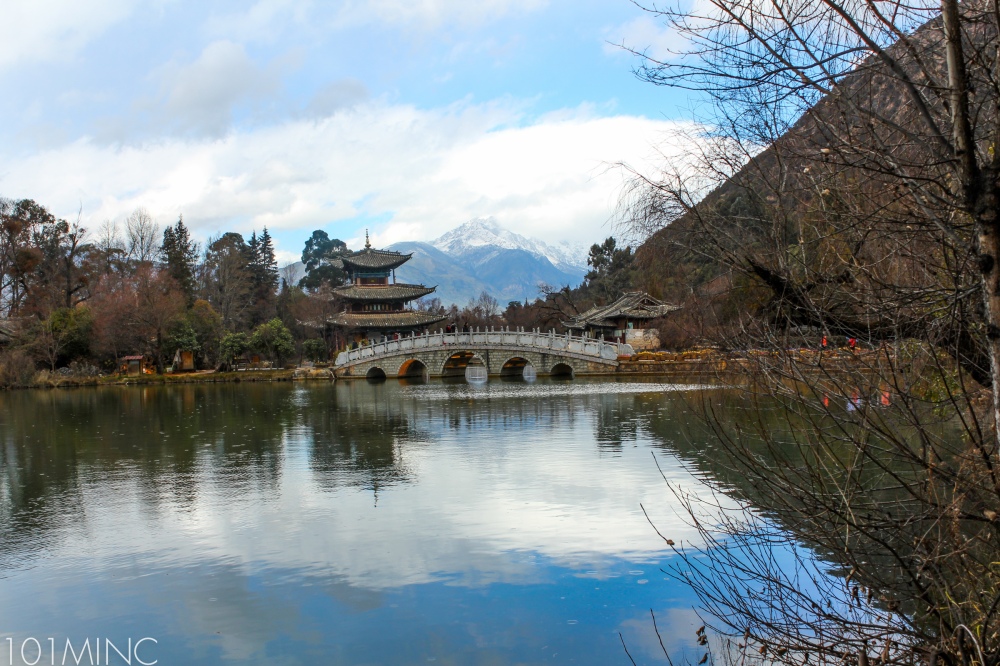
Black Dragon Pool (黑龙潭; Hēilóngtán) at the foot of Elephant Hill.
The pool is the main water from the Yuzhui river that flows though the town. The spring comes from the mountain, Jade Dragon Snow Mountain (玉龙雪山).

The Moon-Embracing Pavilion or the Deyue Pavilion(得月楼)



A cafe with the view for the pond


The water from the Black Dragon Pool (黑龙潭; Hēilóngtán) divert to three different waterways: the west river, the east river and the central river. These rivers then extend to hundreds of small creeks to reach every structure in the Lijiang Old Town (丽江古城).

A pair of Lhama…

Old Soldier resting

Dongba (东巴) Aspiration wind chime. Hanging a wind chime here with a hope and wish from the hearth and if miracle permits, heaven and earth will answer.

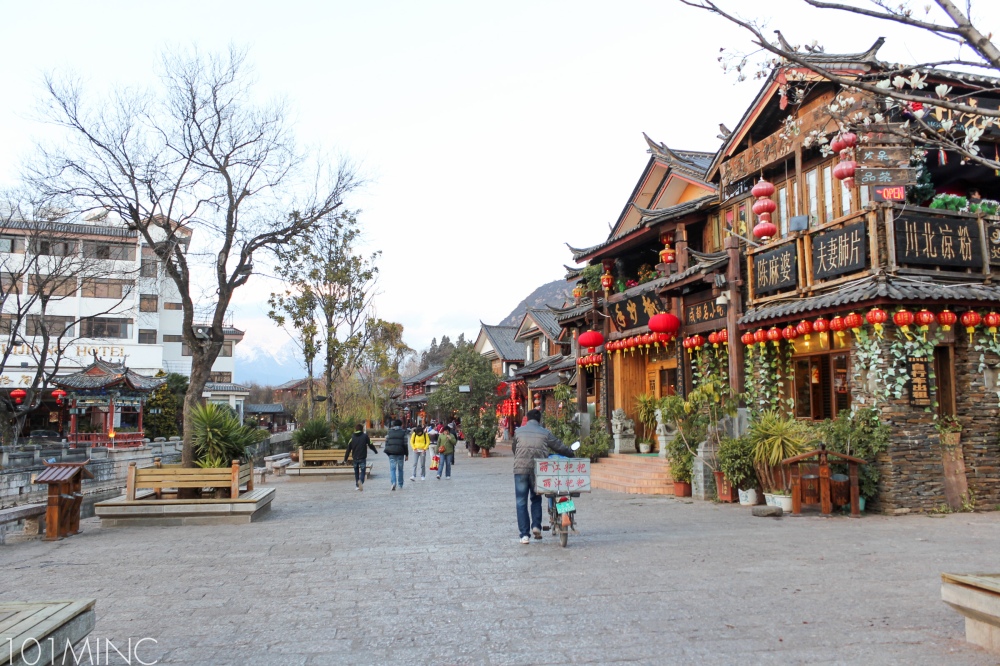

As the sun set, we return to our hostel and eat dinner nearby. Tomorrow is another day, another adventure to Shuhe (束河) Old Town.
Lijiang Trip:
- Lijiang Old Town on Arrival
- Impression of Lijiang
- Lijiang: Baisha Village
- Lijiang: Mu’s Mansion, Lion Hill and the Black Dragon Pool
- Lijiang: Shuhe Old Town
See also Chinese Minority Ethnic Group custom at Shanghai Museum post here.
Source information: Lijiang Guide, DK Eye Witness Travel China, Lijiang information center




























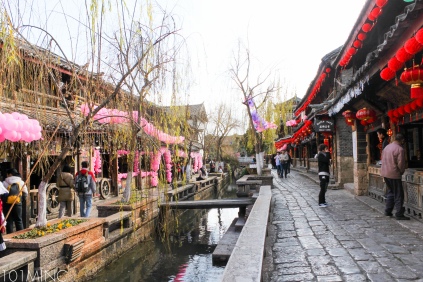


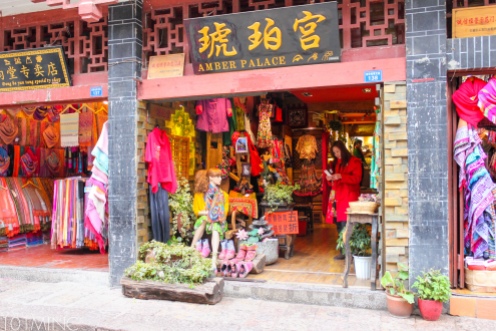



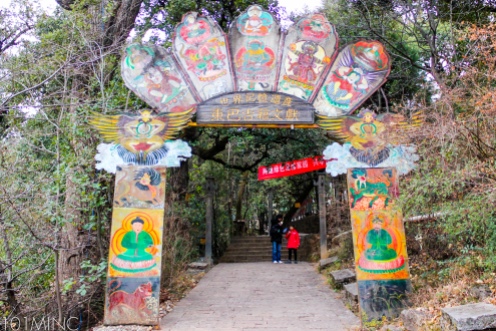





Fantastic photo set! Cannot wait to read more of your China travels. :)
Thank you for your kind words :) hope you enjoy the rest of the trip
Oh my gosh. This looks like one giant movie set! I kinda want to visit decked all out in traditional clothing!!!
It is! the whole old town also recently got expanded but it’s very touristy hahaha. A lot of fun and might want to go there again. Also, Yunnan coffee is a rare delicious find!
Thanks for all the tips, Mel! Let me check the lottery results so I could book a trip to China right this instant and check out all the places you blog about because it’s so interesting.
hahaha. there’s always future travel and adventure. I’m saving to go back to China next year. so finger cross :D